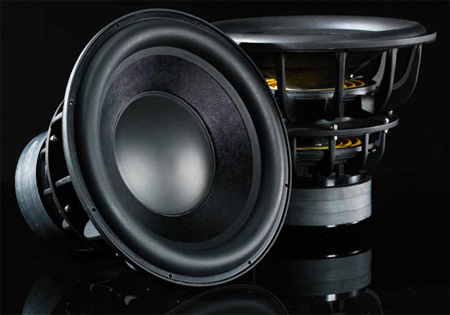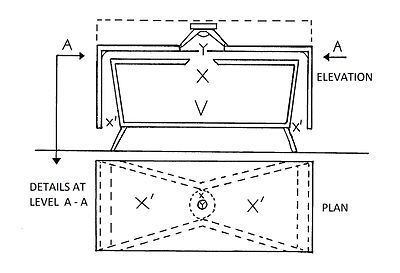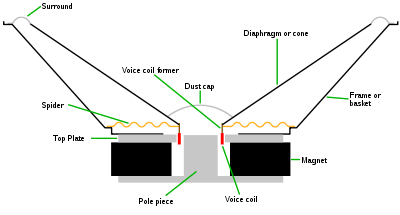
How does a subwoofer work?

Loudspeaker and enclosure design

Subwoofers use speaker drivers (woofers) typically between 8" and 21" in diameter. Some uncommon subwoofers use larger drivers, and single prototype subwoofers as large as 60" have been fabricated.[12] On the smaller end of the spectrum, subwoofer drivers as small as 4" may be used, depending on the design of the loudspeaker enclosure, the desired sound pressure level, the lowest frequency targeted and the level of permitted distortion. The most common subwoofer driver sizes used for sound reinforcement are 10", 12", 15" and 18" models. The largest available sound reinforcement subwoofers, 21" drivers, are less commonly seen.
The efficiency of a speaker driver is given by:
Where the variables are Thiele/Small parameters. Deep low frequency extension is a common goal for a subwoofer and small box volumes are also considered desirable. Hoffman's Iron Laws therefore mandate low efficiency under those constraints, and indeed most subwoofers require considerable power, much more than other individual drivers.
So for the example of a sealed speaker box, the box volume to achieve a given Qts is proportional to Vas:
 Where:
Where: 
Therefore a decrease in box volume and the same F3 will decrease the efficiency of the sub woofer. Similarly the F3 of a speaker is proportional to Fs:
As the efficiency is proportional to Fs3, small improvements in low frequency extension with the same driver and box volume will result in very significant reductions in efficiency. For these reasons, subwoofers are typically very inefficient at converting electrical energy into sound energy. This combination of factors accounts for the higher power output of subwoofer amplifiers, and the requirement for greater power handling for subwoofer drivers. Enclosure variations (e.g., bass reflex designs) are sometimes used for subwoofers to increase the efficiency of the driver/enclosure system, helping to reduce the amplifier power requirement.
Use of this site signifies your agreement to the Terms of Use.




